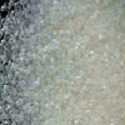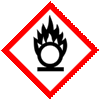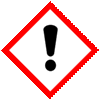 |
Ana Industries P. LTd. |
Sodium Bromate SDS, Safety Data Sheet or MSDS of Manufacturer Exporter














Sodium Bromate Specifications of Manufacturer
Sodium Bromate SDS, Safety Data Sheet
Material Safety Data Sheet
1. Product Identification
Product Name & Other Names: Sodium Bromate.
CAS Number 7789-38-0
EINECS: EC Number: 232-160-4
Molecular Weight: 150.89
Chemical Formula: NaBrO3
Relevant uses and uses advised against (if any): Industrial Manufacturing.
2. Hazards Identification
GHS, Globally Harmonized System Classification in accordance with 29 CFR 1910
Classification according to Regulation (EC) No 1272/2008:
Oxidizing solids Category 2
Acute Toxicity Oral Category 4
Skin irritation Category 2
Eye irritation Category 2A
Specific target organ toxicity - single exposure Category 3, Respiratory system
Labeling according to GHS & Regulation (EC) No 1272/2008
| GHS Label Elements  Oxidizing Solid |
GHS Label Elements  Irritant |
Signal Word: Danger
Hazard Statements:
H272: May intensify fire; oxidizer.
H302: Harmful if swallowed.
H315: Causes skin irritation.
H319: Causes serious eye irritation.
H335: May cause respiratory irritation.
Precautionary Statements
P210: Keep away from heat/sparks/open flames/hot surfaces – No smoking.
P220: Keep/Store away from clothing/…/combustible materials.
P221: Take any precaution to avoid mixing with combustibles.
P260: Do not breathe dust/fume/gas/mist/vapors/spray.
P264 Wash thoroughly after handling.
P270 Do not eat, drink or smoke when using this product.
P273: Avoid release to the environment.
P280 Wear protective gloves/protective clothing/eye protection/face protection.
P330: Rinse mouth.
P301+P312: IF SWALLOWED: Call a POISON CENTER or doctor/physician if you feel unwell.
P301+P330+P331 IF SWALLOWED: rinse mouth. Do NOT induce vomiting.
P302+P352: IF ON SKIN: Wash with soap and water.
P303+P361+P353 IF ON SKIN (or hair): Remove/Take off immediately all contaminated clothing. Rinse skin with water/shower.
P304+P340 IF INHALED: Remove victim to fresh air and keep at rest in a position comfortable for breathing.
P305+P351+P338: IF IN EYES: Rinse cautiously with water for several minutes. Remove contact lenses, if present and easy to do. Continue rinsing.
P310 Immediately call a POISON CENTER or doctor/physician.
P332+P313: If skin irritation occurs: Get medical advice/attention.
P337+P313 If eye irritation persists: Get medical advice/ attention.
P342+P311 If experiencing respiratory symptoms: Call a POISON CENTER or doctor/physician.
P370+P378: In case of fire: Use … for extinction.
P362: Take off contaminated clothing and wash before reuse.
P501 Dispose of contents/container in accordance with local/regional/national/international regulations.
Classification according to EU Directives 67/548/EEC or 1999/45/EC:
Hazard Symbol:
O Oxidizing; Xn Harmful
Risk Phrase:
R 8 = Contact with combustible material may cause fire.
R22 = Harmful if swallowed.
R36/37/38 = Irritating to eyes, respiratory system and skin.
3. Composition/Information on Ingredients
Product: Sodium Bromate.
CAS No.: 7789-38-0
EINECS: EC Number: 232-160-4
Percent: 97 - 100%
4. First Aid Measures
Always seek medical attention after first aid measures are provided.
Inhalation: Remove to fresh air. If not breathing, give artificial respiration. If breathing is difficult, give oxygen. Get medical attention.
Ingestion: Never give anything by mouth to an unconscious person. Get medical attention.
Skin Contact: Wipe off excess material from skin then immediately flush skin with plenty of water for at least 15 minutes. Remove contaminated clothing and shoes. Get medical attention. Wash clothing before reuse. Thoroughly clean shoes before reuse.
Eye Contact: Immediately flush eyes with plenty of water for at least 15 minutes, lifting lower and upper eyelids occasionally. Get medical attention immediately.
5. Fire Fighting Measures
Flammability of the Product: The product is not flammable but it is an oxidizer.
Flash Points: NA.
Products of Combustion: It emits toxic oxides of sodium and hydrogen bromide or bromine.
Fire: Sodium Bromate is an oxidizer.
Fire Extinguishing Media: Use water spray, alcohol-resistant foam, dry chemical or carbon dioxide. Use means suitable for extinguishing surrounding fire.
Special Information In the event of a fire, wear full protective clothing and NIOSH-approved self-contained breathing apparatus with full face piece operated in the pressure demand or other positive pressure mode. Use water spray to cool unopened containers.
6. Accidental Release Measures
Personal precautions, protective equipment and emergency procedures: Avoid breathing dust/fumes/gas/mist/vapors/spray. Use individual protective equipment (waterproof boots, suitable protective clothing, safety glasses, etc). Restrict unprotected personnel from the area. Prevent any contact with hot surfaces. Do not approach facing the wind. Do not touch the spilled material.
Environmental precautions: Do not let the product enter drains, soil or water sources.
Methods and materials used for containment Cleanup procedures and Storage:
Small Spill: Avoid dust formation. Avoid breathing dust. Ensure adequate ventilation. Use appropriate tools to put the spilled solid in a convenient waste disposal container. Finish cleaning by spreading water on the contaminated surface and dispose of according to local and regional authority requirements.
Large Spill: Do not let the product enter drains. Contain spilled material. Use a shovel to put the material into a convenient waste disposal container.
7. Handling and Storage
Precautions for safe handling: Apply according to good manufacturing and industrial hygiene practices. Ensure proper ventilation. Wash thoroughly after handling. Do not drink, eat or smoke while handling. Avoid contact with skin, eyes and clothing. Minimize dust generation. Avoid breathing dust/fumes/gas/mist/vapors/spray. Avoid contact with eyes, skin, and clothing. Keep container tightly closed. Avoid ingestion and inhalation. Use individual protective equipment (waterproof boots, suitable protective clothing, safety glasses, etc). Prevent any contact with hot surfaces.
Conditions for safe storage, including any incompatibilities: Store in cool, dry and ventilated area away from heat sources and protected from sunlight in tightly closed original container. Keep air contact to a minimum. Do not leave the material container open. Store protected from heat, sparks and ignition sources and incompatible materials. Avoid contact with skin and eyes. Avoid inhalation of dust/mist/vapor. Do not store with incompatible materials like oxidizing material, reducing agents, powdered metals, alcohols, strong acids and combustible substances.
8. Exposure Controls/Personal Protection
Airborne Exposure Limits: None established.
Ventilation System: A system of local and/or general exhaust is recommended to keep employee exposures as low as possible. Local exhaust ventilation is generally preferred because it can control the emissions of the contaminant at its source, preventing dispersion of it into the general work area.
Personal Respirators (NIOSH Approved): For conditions of use where exposure to dust or mist is apparent and engineering controls are not feasible, a particulate respirator may be worn. For emergencies or instances where the exposure levels are not known, use a full-face positive-pressure, air-supplied respirator.
Skin Protection: Wear protective gloves and clean body-covering clothing.
Eye Protection: Use chemical safety goggles and/or full face shield where dusting or splashing of solutions is possible. Maintain eye wash fountain and quick-drench facilities in work area.
Other Control Measures: Maintain good housekeeping in work area. Dust deposits on floors and other surfaces may pick up moisture and cause the surfaces to become slippery and present safety hazards. Handle in accordance with good industrial hygiene and safety practice. Wash hands after handling.
9. Physical and Chemical Properties
Appearance: It is colorless or white crystals or powder or granules.
Odor: None to slight.
Odor threshold: Not available.
pH: 5-9 at 5% solution at 25 C (77F)
Relative density: 3.34.
Melting point/freezing point: Not available.
Boiling Point: Decomposes.
Flash point: Not available.
Auto-ignition temperature: Not available.
Decomposition temperature: Not available.
Upper/lower flammability or explosive limits: Not available.
Vapor pressure: Not available.
Vapor density: Not available.
Evaporation rate: Not available.
Flammability (solid, gas): Not available.
Partition coefficient: n-octanol/water: Not available.
Solubility: Readily soluble in water
Viscosity: Not available.
Molecular Weight: 150.89
Chemical Formula: NaBrO3
10. Stability and Reactivity
Stability: It is stable under ordinary conditions of use and storage.
Hazardous Decomposition Products: It emits toxic hydrogen bromide or bromine along with sodium oxide when heated to decomposition.
Hazardous Polymerization: Will not occur.
Incompatibilities: Strong reducing agents, Powdered metals, Alcohols, Strong acids.
Conditions to Avoid: Moisture, Heat, Incompatibles.
11. Toxicological Information
Toxicity to Animals:
LD50 Intraperitoneal - mouse - 140 mg/kg
Carcinogenicity: This product present at levels greater than or equal to 0.1% is identified as probable, possible or confirmed human carcinogen by IARC, NTP, ACGIH & OSHA.
Reproductive toxicity: No data available
Teratogenic Effects: Not available.
Developmental Toxicity: Not available.
12. Ecological Information
Persistence and Degradability: No information available.
Mobility: No information available.
Bioaccumulation/ Accumulation: No information available.
Results of PBT and vPvB assessment: No data available for assessment.
Likely to be toxic to aquatic organisms, may cause long-term adverse effects in the aquatic environment. Do not empty into drains. Do not flush into surface water or sanitary sewer system. Do not allow material to contaminate ground water system.
13. Disposal Considerations
Whatever cannot be saved for recovery or recycling should be managed in an appropriate and approved waste disposal facility. Processing use or contamination of this product may change the waste management options. State and local disposal regulations may differ from federal disposal regulations. Dispose of container and unused contents in accordance with federal, state and local requirements. Small amounts of this material may be suitable for sanitary sewer or trash disposal.
14. Transport Information
DOT (USA) & ADR/RID
UN-Number: UN1494 Class: 5.1 Packing group: II
Proper shipping name: Sodium bromate
IMDG
UN-Number: UN1494 Class: 5.1 Packing group: II
Proper shipping name: Sodium bromate
IATA
UN-Number: UN1494 Class: 5.1 Packing group: II
Proper shipping name: Sodium bromate
15. Regulatory Information
USA:
SARA 302 Components: SARA 302: No chemicals in this material are subject to the reporting requirements of SARA Title III, Section 302.
SARA 313 Components: SARA 313: This material does not contain any chemical components with known CAS numbers that exceed the threshold (De Minimis) reporting levels established by SARA Title III, Section 313.
SARA 311/312 Hazards: Reactivity Hazard, Acute Health Hazard, Chronic Health Hazard
California Prop 65: This product does not contain any chemicals known to State of California to cause cancer, birth defects, or any other reproductive harm.
Section 16 - Additional Information
DISCLAIMER: The information and recommendations set forth herein (hereinafter "Information") are presented in good faith and believed correct as of the date hereof. It is compiled from various sources and it is not necessarily all inclusive nor fully adequate in every circumstance. In addition, these suggestions should not be confused with nor followed in violation of applicable laws, regulations, rules or insurance requirements applicable. This MSDS sheet is intended only as a guide to the appropriate precautionary handling of the material by a properly trained person using this product. Individuals receiving the information must exercise their independent judgment in determining its appropriateness for a particular purpose.
Contact Sodium Bromate Manufacturers Suppliers Exporters:
Ana Industries P. LTd.
email: info@anaindustries.org
Call:
+912223774610
Houston USA, Dubai UAE Dahej & Mumbai India.

